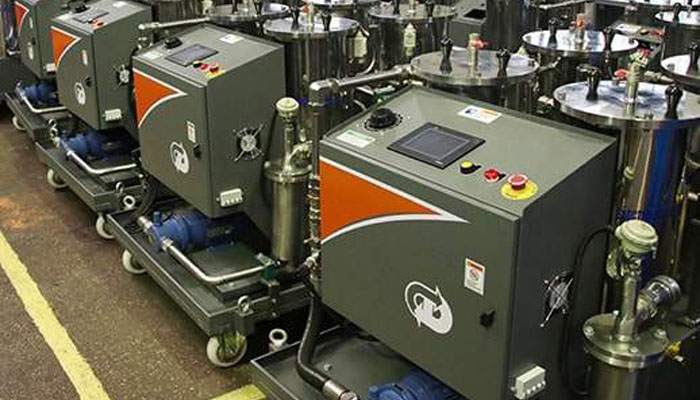
Electrostatic oil cleaning is a process used to remove impurities, contaminants, and particulate matter from transformer oil. It is a crucial step in maintaining the efficiency and longevity of a power transformer. The following is a detailed setup and process involved in electrostatic oil cleaning.
Before initiating the electrostatic oil cleaning process, a thorough inspection of the transformer and its oil is conducted. The transformer is de-energized, and the oil is sampled and tested for various parameters such as acidity, moisture content, and presence of contaminants. If any abnormalities are detected or if the oil does not meet required standards, it may need to be pre-filtered or processed before starting the electrostatic oil cleaning.
The setup for electrostatic oil cleaning consists of several main components:
a. Electrostatic Precipitator: This is the primary unit responsible for the actual cleaning of the oil. It includes a series of electrodes and collector plates, which generate an electrostatic field. The impurities and particulate matter suspended in the oil are attracted to the electrodes and collected on the plates.
b. Oil Circulation System: A pump and piping system is used to circulate the transformer oil through the electrostatic precipitator. The oil is drawn from the transformer's tank, passed through the precipitator, and then returned to the tank. This continuous circulation ensures that all the oil is cleaned thoroughly.
c. Control and Monitoring System: An electronic control system is used to regulate the operation of the electrostatic precipitator. It controls the voltage supplied to the electrodes, monitors the flow rate of the oil, and provides real-time data on the cleaning process.
The process of electrostatic oil cleaning involves the following steps:
a. Oil Filtration: If the transformer oil requires pre-filtering, it is passed through appropriate filters to remove larger particles and impurities. This step is crucial to prevent clogging or damage to the electrostatic precipitator.
b. Charging: The oil is then injected into the electrostatic precipitator, where it passes between the electrodes and collector plates. An electric charge is applied to the electrodes, creating an electrostatic field. The suspended impurities and particulate matter in the oil are charged and attracted to the collector plates.
c. Collection: As the charged impurities move towards the collector plates, they adhere to the plates' surfaces. The impurities form a layer or film on the plates, which is periodically removed or cleaned.
d. Cleaning and Disposal: To clean the collector plates, an automated system or manual intervention may be required to remove the accumulated impurities and particulate matter. The removed contaminants are collected and properly disposed of according to environmental regulations.
During the electrostatic oil cleaning process, various parameters such as oil flow rate, voltage, cleanliness levels, and pressure differentials are continuously monitored. This data is analyzed to ensure that the oil is being effectively cleaned and that the system is functioning optimally.
Once the electrostatic oil cleaning process is complete, the oil is sampled and tested again to evaluate its quality and cleanliness. Parameters such as acidity, moisture content, dissolved gas concentration, and particulate levels are measured. If the oil meets the required standards, it can be reintroduced into the transformer.
In summary, the electrostatic oil cleaning setup and process involve initial inspection, electrostatic precipitator setup, oil circulation system, control and monitoring systems, oil filtration, charging, collection, cleaning and disposal of impurities, monitoring and analysis, and final testing. This process ensures the removal of contaminants and particulate matter from transformer oil, improves the insulation properties, and helps maintain the efficiency and longevity of power transformers.